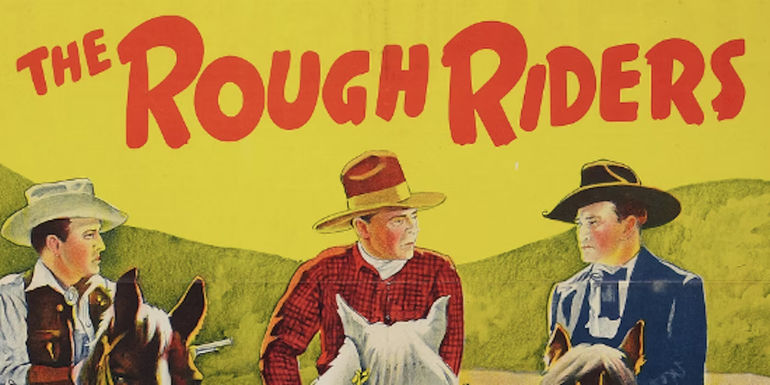
The Forgotten B-Westerns That Shaped the Genre

Explore the history and impact of B-Westerns, the low-budget Western adventures that played a crucial role in shaping the future of the Western genre.
The Rise of the B-Western
Before the Golden Age of the Western genre, the B-Western reigned supreme. While there were always cheap, campy horror movies and trashy low-budget comedies, the B-Western was the archetypical B-movie. Produced on a minuscule budget with an audience of children in mind, B-Westerns were short, cheap Western adventures that played after an A-feature in early theatrical double bills. While A-features had expensive, purpose-built sets and recognizable stars, B-Westerns relied on stock characters, familiar tropes, and sometimes even reused stock footage.
A cropped version of %22Riders of the West Rough Riders,%22 a B Western poster
While all of this makes the B-Western sound like a blip in the history of cinema, these cheaply produced curios actually helped shape the future of the genre. Some of the best Western directors of all time got their start working on B-Westerns and the tropes popularized by these profitable releases went on to appear in many more prestigious Westerns. In fact, the B-Western effectively set the stage for the genre's Golden Age, as older audiences embraced the genre and the Western gained a certain level of prestige.
The hero stares down his love interest in The Outcast 1954
Notable B-Western Films
The B-Western genre produced numerous films that left a lasting impact on the Western genre. One such film is 'Riders Of The West' (1942), a heroic tale of US Marshall and ranchers standing against corrupt businessmen. The story's resonance and relevance to today's issues make it a standout B-Western.
The hero is held at gunpoint by his love interest in the desert in Tombstone Canyon
Another notable B-Western is 'The Outcast' (1954), distinguished by its stunning cinematography and classic revenge plot. This film showcases the charm and humor that are characteristic of B-Westerns.
A host of henchmen wielding guns in The San Antonio Kid
Directed by B-movie legend Alan James, 'Tombstone Canyon' (1932) stands out for its unusually dark and mysterious plot, a departure from the typical B-Western themes of the era.
A cropped poster for the John Wayne B-Western Winds of the Wasteland
Diversity in B-Westerns
The diversity of B-Westerns is evident in films like 'The San Antonio Kid' (1944), which exposes a conspiracy to drive ranchers off their land. This plot would later be revisited in a 2023 TV show, demonstrating the enduring influence of B-Western themes.
Gene Autry knocks out an opponent as townspeople look on in Sioux City Sue
In 'Winds of the Wasteland' (1936), the focus shifts to a different kind of cowboy as Pony Express riders compete for a government mail contract. This showcases the variety and creativity present in B-Western storytelling.
A cropped poster for 1926's silent B-Western The Grey Vulture
While some B-Westerns parodied the genre, such as 'Sioux City Sue' (1946), others, like 'The Grey Vulture' (1926), offered a comedic take on traditional heroic cowboys, adding depth and humor to the genre.
John Wayne in Dark Command
















